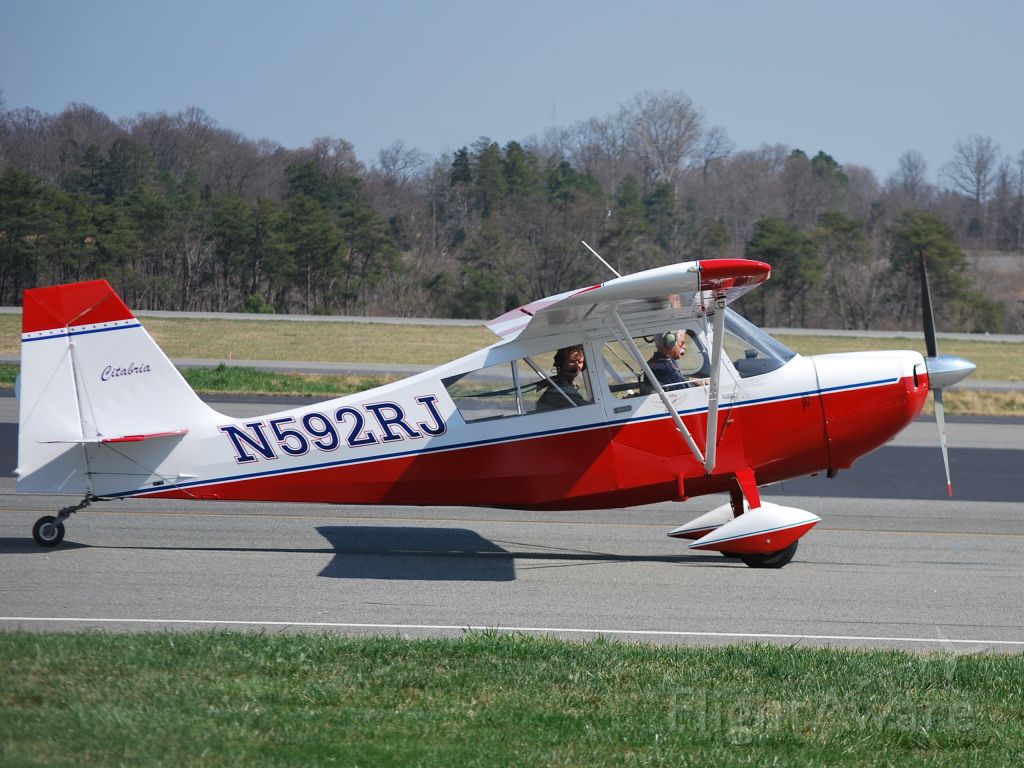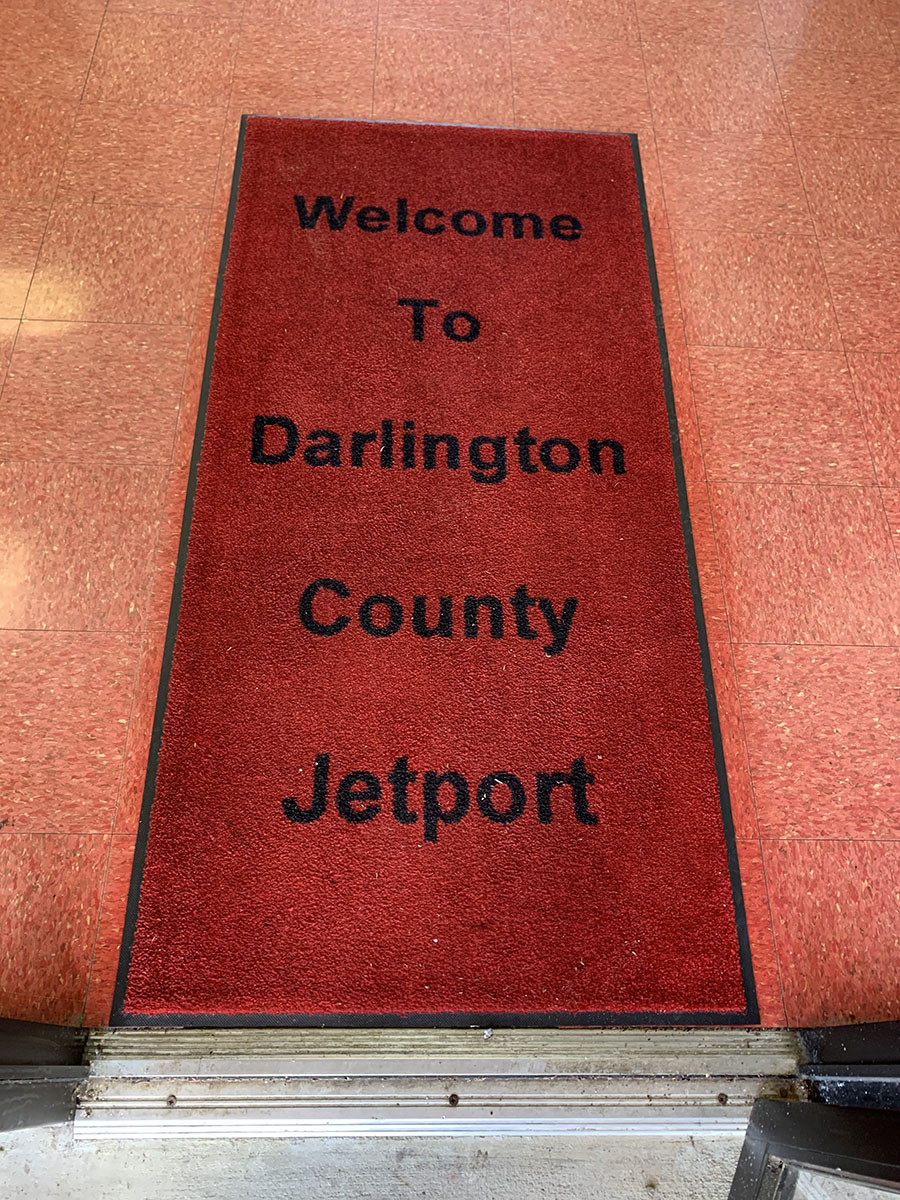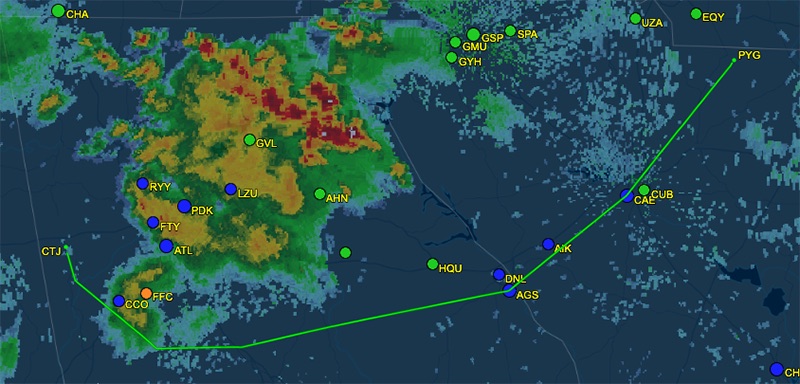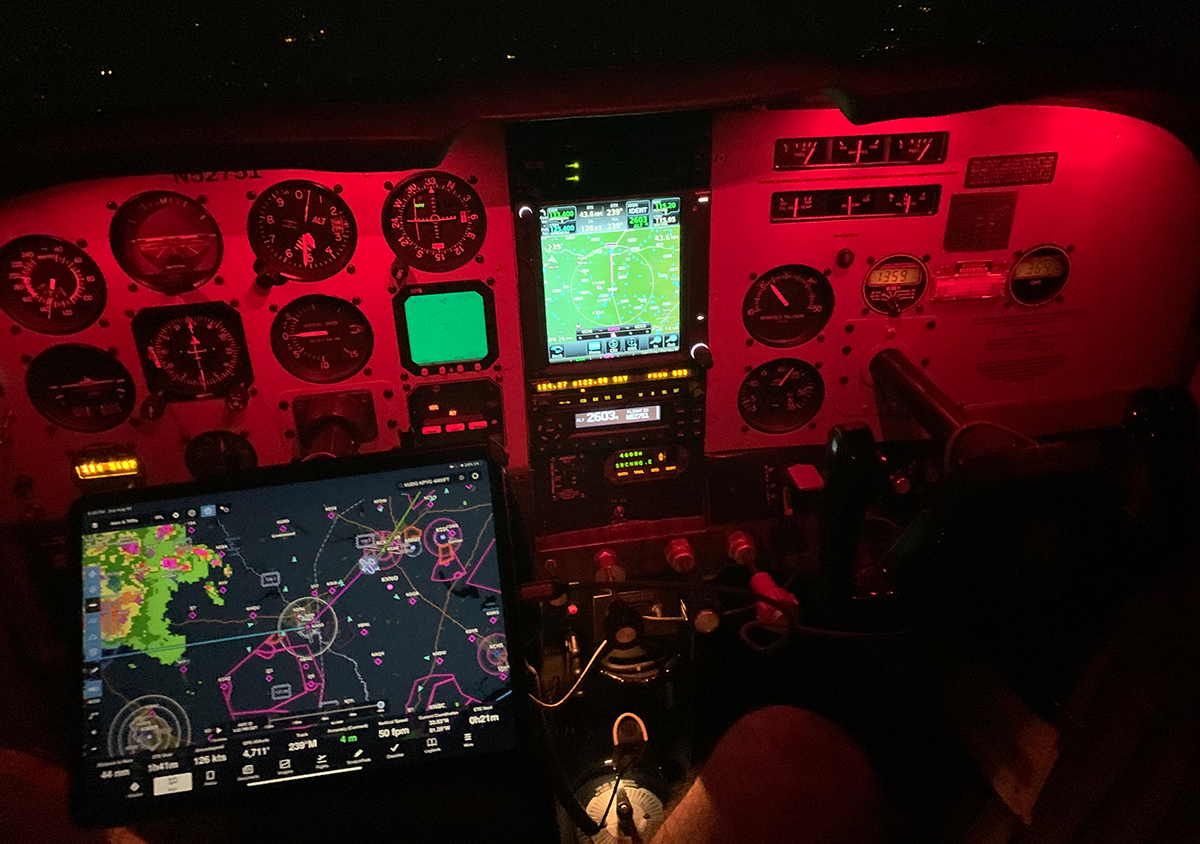Long Training Weekend - Day 5
The weather had cleared up, it was a beautiful day, and I needed to make up for lost time. Today would be the day that would thoroughly test my endurance and concentration.
Roger had back-to-back students on the schedule beginning at 8 a.m., so once again, it was rise and shine at 6 a.m. and leave for the airport by 7. I had a little time to kill, so I spent some time doing some flight planning for the day and got a head start on my preflight, so that when Roger returned and was ready to go, I wouldn’t be the one delaying our departure.
Route for Day 5: KPYG - KAFP - KGWW - KAFP - KFLO - KUDG - KPYG - KCTJ
Pageland, SC. - Anson County, NC. - Goldsboro, NC. - Anson County, NC. - Florence, SC. - Darlington, SC. - Pageland, SC. - Carrollton, GA.
Duration: 8.5 hours - 579.6 miles
The goal for the day was to get me back on track with my instrument flying and shoot as many approaches as possible, but we would also be delivering his Citabria to a shop for a repair. Recently, when flying aerobatics, the rear window of the Citabria departed the aircraft and tore some fabric along the left wing and the vertical stabilizer. The repair shop was in Goldsboro, North Carolina, about 135 miles away from Pageland, so I would be flying over to act as Roger’s ride home; convenient, since I needed him in the plane with me to practice my instrument approaches!

We both needed fuel, so we decided to make our first stop Anson County, North Carolina. Anson County had a pretty good price for fuel and was along our flight path, so it was a logical place to stop. Upon landing, I noticed that all of the gyrocopter pilots were very active in the pattern. Watching those things buzz around the airport is quite an experience! I topped up my tanks and then pushed back just enough to let Roger slide in for a fill-up. After a quick 15-minute stop, we started up the engines and taxied back out for our departure to Goldsboro. Roger would take the lead and depart from runway 34. After a brief runup, I followed suit, knowing that I would quickly catch up and pass him just east of the airport.
Upon my initial climb out, as expected, I caught up with Roger and passed him on my way to intercept the Victor airways that would take me to the first intersection on my flight plan. In between Anson County and Goldsboro lies a bunch of airspace that surrounds Fayetteville, North Carolina and Pope Army Airfield, which I needed to navigate around. Because of this, I had planned to take a Victor airway that would lead me north of the restricted areas and upon reaching the BQ1 waypoint, I would turn direct east to Goldsboro. As I approached Goldsboro, I tuned into the weather so I could get an idea of which approach I should shoot into the airport. The winds favored runway 23, so I decided to shoot the RNAV GPS approach and programmed my GPS and then loaded and activated the approach.
The approach was uneventful and I was able to get the plane on the ground and parked before I even heard Roger’s first call on the radio announcing his arrival into the airspace. After watching him land and taxi to the ramp, we immediately began the hunt for food. It was now about 2 p.m. and Roger was getting a little cranky and needed to eat. We borrowed the airport’s courtesy car and drove about 4 miles to a local burger joint. After we ate, it was time to get back and do a bunch of instrument flying on the way back. After all, I still had to fly back home tonight!
By the way, I’ve been to a lot of airports that had airport dogs… I’ve even seen airport cats… but an airport fish? This fish was a huge goldfish and believe it or not, he seemed really friendly. If you walked up the tank, he would swim right up to the edge, like he was greeting you. Or maybe he was expecting to be fed? Who knows, but it was definitely different and not something you see every day.

We departed from Goldsboro on runway 23 and turned towards the west to shoot the approaches at Anson County and Florence for more practice. Upon arriving at Anson, I shot the ILS approach from runway 34, landed, and departed again for Florence. Florence was chosen for a few reason. First, it was going to be the airport where I was going to be performing my checkride, so it would be beneficial to practice and know those approaches. Secondly, Florence is a controlled airport, so I could practice the approaches while being vectored in by ATC. In theory, it was a good idea, unfortunately, due to COVID-19 and the restrictions and closings in-place, the Florence tower had closed early, which reverts the airspace back into class E uncontrolled airspace. Oh well, it was a good effort. Since it was in our flight plan anyways, I practiced the VOR-A approach with the procedure turn into Florence. Although these types on non-precision approaches aren’t used very much for day-to-day flying, it’s important to know how to do them correctly. After shooting the approach and circling to land, we decided to make one more stop in Darlington before we headed back to Pageland.
Since I still had a 2-hour flight back home tonight, I wanted to make sure that my tanks were topped off before I left, so I could go direct. I programmed the GPS for the RNAV GPS approach into runway 05 at Darlington. Everything was great, the approach was going fine, until I was on short final and a small plane pulled out onto the runway to depart. No radio call, no nothing. I quickly make a radio call informing Darlington traffic of my short final for runway 05, but never heard a response from the departing airplane. Just as I was reaching for the throttle and announcing a go-around, the other aircraft announced his departure on the radio and apologized. I was able to slow the plane down enough to continue my landing, but I was frazzled and annoyed. The few minute break for pumping gas was a welcome one and allowed my heartrate to return back down to normal levels. The tanks were topped and it was finally time to head back, drop Roger off and make the return trip home.

By the time we arrived back in Pageland, it was dark. Pitch dark. Pageland isn’t exactly a big city, so there aren’t many ambient lights around to help light up the environment. I pulled up to Roger’s hangar and exited the plane to make a few final preparations. The weather in the Atlanta was not looking the best and there were thunderstorms moving across the area from the southwest. After studying the weather reports and forecasts, I decided to take a more southerly route, which would lead me over Columbia, South Carolina and Augusta, Georgia and then just south of the busy Atlanta airspace. This route was clear, at least until I got just south of Atlanta, and with the direction and speed that the storms were moving, it should be clear by the time I arrived. It was now almost 9:00 p.m. and it was time to go. With planned route going around Atlanta, the estimated time enroute would be 2.5 hours.

As I started the engine and began my taxi back to the runway, I saw that Roger had parked so he could watch my departure. It really is amazing how darkness can affect the way that you perceive things. The 3400 foot runway at Pageland appeared to be much shorter in the darkness, and as I lifted off, it felt as if I was flying into a pitch black abyss. It was dark. I began my climb up to 4500 feet, I contacted Shaw approach and requested VFR flight following. Although it’s not a requirement, I also prefer to have someone keeping tabs on my flight location, especially when adverse weather conditions could pop up at any moment. Once I arrived at my final altitude, the flight was smooth. I leaned the mixture back to reduce my fuel flow and then settled in for the flight. My route took me directly over the Columbia and Augusta airports before the GPS steering instructed the autopilot to turn me due east to the Atlanta area.

As I approached the Atlanta terminal area, I contacted Atlanta approach and got an update about the weather. It looked as if all of the bad stuff was now North of Atlanta and only some light rain persisted just south of the airport. All I know is that it made for some really colorful activity on my screens in the cockpit! By the time I arrived, even the light rain was gone and I never saw a single drop of water.

I programmed the GPS for the RNAV GPS approach for runway 35 in Carrollton. Although the runway at home is lighted, because of the trees at the approach end of the runway, it’s not really a good idea to attempt a night landing, so I made the decision before I left to just fly into Carrollton and be picked up at the airport. As I turned onto the initial approach fix, I clicked the mic 7 times to activate the runways lights and like magic, the runway appeared 12 miles in front of me, exactly where it was supposed to be.
After an uneventful landing I taxied up to the ramp, shut off the engine, and tied her up for her overnight stay. It was a great few days of flying, but I was exhausted. It was now almost 11:30 p.m. and I needed to get home and rest before my work week would start back up again in the morning. Looking back at the last few days, there were a lot of memorable experiences and once again, I realize that I am one of the lucky ones that get to experience the wonders of flight.